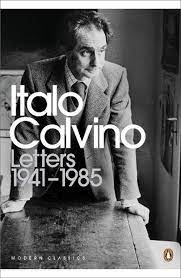Pietro Bembo in other languages
Author: Ilaria Burattini, Università di Bologna

The translations of Pietro Bembo’s works started in 16th century Paris: in 1545,
Michel de Vascosan and Gilles Corrozet printed Les Azolains de Monseigneur Bembo, de la nature d’Amour. The French version of the text was entrusted to Jean Martin. He was one of the most famous translators of Italian works from Orlando Furioso by Ariosto to Arcadia by Sannazzaro. This typographical undertaking led to three further reprints. It may be considered the first mark of one of Italy’s major protagonists in literature to receive a European reception. Bembo, who was a symbol of the Renaissance and the main advocate of the vernacular language, imposed a linguistic and stylistic model which, although often cumbersome, influenced works beyond the Alps. However, it is necessary to reflect on the cultural vectors through which Bembo’s work spread and on its use in European territory. Although the pilgrimage of Italian intellectuals abroad favored the exportation of works (in most cases, not in translation), the press must also have collaborated in the large-scale success of a particular aspect of the cardinal’s writings, in line with the publishing market and the taste of the public to which it was addressed.
The success of the profile of Bembo is not surprising. This humanist and lyric-loving poet was capable of keeping up with figures such as Ariosto or Petrarch, both acclaimed authors in European. In particular, the works of the cardinal, as is well known by now, were the main mediator for Petrarch’s works in Europe, reinterpreted through the crest of neo-Platonic and Ficinian philosophy. On the other hand, however, the grammatical experiment of Prose, although deeply rooted in all Italian linguistic and cultural controversies, remained a valid example for all intellectuals interested in providing a grammatical norm for their own language.
But which Bembo and, above all, how can we read Bembo in Europe today? In order to understand, we must follow the ranks of the various translations that have appeared to date. There are several of De Aetna, a dialogue that is the result of Bembo’s internship in Messina when he was young. In 2015, thanks to the care of the German Gerd von der Gönna, Der Ätna was published, following a first translation by Kosmas Ziegler in 1970 for the Officina Bodoni publishing house. Just a year earlier, in 1969, Betty Radice’s English bilingual edition appeared with the same editorial brand and was reprinted together with a group of lyrics in The I Tatti Renaissance Library series by Harvard University Press, which also published the 12 volumes of the Historia Veneta in 2004. Between the 1990s and 2000s, a French translation by Marie Viallon and a Polish translation by Ireneusz Mikołajczyk also appeared. An undisputed success seems to be due, however, to the three books of the Asolani. Rudolf B Gottfried originally inaugurated the translation series with his 1954 English edition, which was flanked by the work of Carol Kidwell in 2006. In Spain, Josè Maria Reyes Cano published Los asolanos in 1990 whilst, two years later, the Asolaner Gespräche, Dialoge über die Liebe, a German translation by Michael Rumpf appeared.
In France, there is a 2006 edition by Marie-Françoise Piéjus, part of the bilingual collection of the Biblioteque Italienne, directed by Yves Hersant and Nuccio Order. Among the most recent, however, we mention the Polish parallel text translation by Anamaria Gebăilă (2016) and the Japanese translation by Masumi Doi (2016). In the wake of the love theme and the charm that the alleged liaison between Bembo the poet and Lucrezia Borgia arose in the reader, translations of part the correspondence between the two lovers are ascribed; in particular, the small epistolary collection translated in 1987 by Hugh Shankland, The Prettiest Love Letters in the World: The Letters Between Lucrezia Borgia and Pietro Bembo 1503-1519, accompanied by refined illustrations by Richard Shirley Smith. However, Bembo’s theoretical correspondence was also of interest, where a letter would assume the autonomy of a treaty. This is what happensed with De imitatione, the famous exchange by letter with Pico della Mirandola, on imitation. A Spanish translation, Sobre la imitación by Oriol Mirç Martì (2017) and a further English translation by Izora Scott (1991) also appeared. His correspondence with Erasmus was partly translated in 2017 into Dutch by J. C. Bedaux. Instead, his most famous work, Le prose della volgar lingua, has just one Spanish translation released in 2011, Prosas de la lengua vulgar, by Oriol Mirç Martì and a French version, soon to be published and edited by Florence Bistagne, that are available.
As we have seen, these are editorial initiatives aimed not just at experts. The paratext,, and therefore the layout, the apparatus of notes or comments, as well as the care taken in the presentation of the book are aimed at making Bembo’s work easily accessible to a foreign audience. And so it is that a canonical text from the Renaissance may appear alongside the milestones of Italian literature, from the least recent, with Dante, Petrarca, Boccaccio, to the most current, with Calvino, Buzzati – just to name a few – in a European context and world.
Ilaria Burattini, University of Bologna










